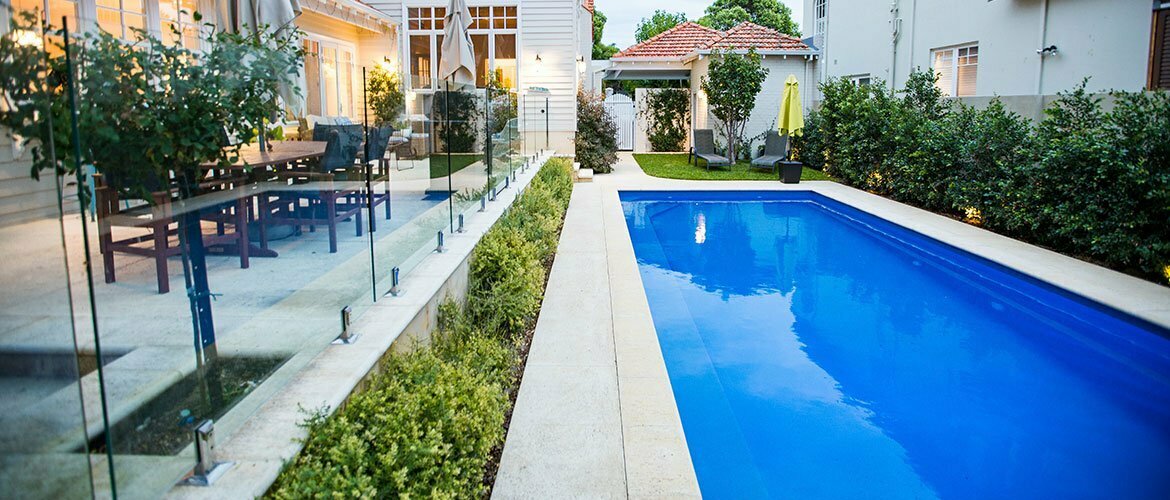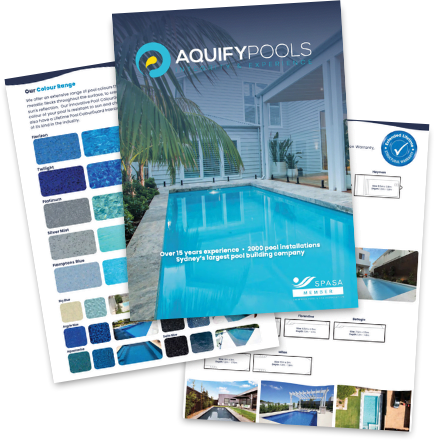Your swimming pool was probably a good size investment, and you must protect it properly during the winter months. Even though Aussie winters aren’t as usually too harsh (depending on where you live), our backyard swimming pools aren’t designed to be left languishing if the weather does turn nasty.
Let’s discuss the pre-winter preparations you should make, as well as specific challenges that certain regions face and winter swimming pool maintenance best practices.
Specific Challenges Faced During Australian Winters
Variable Temperatures
While our winters are generally quite bearable, there is still a significant degree of variable temperatures that may affect your inground pool or specific designs, such as the spa pool combo like the Spillway Series, as some areas may dip below freezing. Make sure you maintain a degree of flexibility in your pool maintenance to allow for the sometimes unpredictable weather.
Rainfall Variability
There is a certain degree of flexibility in Australia’s rainfall charts in winter, but for some regions, it can also be a time for heavy rainfall (particularly in the southern states). If you plan on using evaporation to get rid of small amounts of standing swimming pool water, you may be in for a surprise. Similarly, some areas of the country can experience drier conditions, meaning you’ll have to be flexible in your water management plans for year-round swimming pool use.
Wind and Debris
Windy conditions can occur at any time of year. If you’ve been advised of a potential windstorm, it is never safe to be outside in your pool. Be extra vigilant about running your filtration system after a windstorm, as some swimming pool designs aren’t equipped with large enough filtration systems to handle large debris or massive amounts of leaves or other smaller debris.
Winter Pool Care Essentials for Australians
Here are some key things to do to maintain your pool this winter.
Pre-Winter Cleaning
As the seasons change and autumn gives way to winter, consider doing a pre-winter cleaning of your pool. These include the following steps:
- Thorough Scrubbing: Before winter comes, ensure you drain your pool completely and clean it thoroughly. Remove any accumulated algae, dirt and debris from the surface of the pool using pool cleaning solutions and brushes or cloths. Depending on the type of inground pool you have, your jets will require particular attention as dirt and grime tend to gather there.
- Filter Backwash: Backwash your pool’s filter using a garden hose to remove any trapped grime, dirt or debris. Consult your filter’s manual on how to do this correctly.
- Empty Skimmer and Pump Baskets: Your skimmer and pump baskets are designed to catch large debris. Ensure that these are properly emptied and cleaned to prevent winter debris build-up.
Circulation and Filtration
- If you’re in an area that experiences freezing, or colder temperatures, then you need to maintain water circulation. Adjust your pool pump operation to allow for proper circulation, but set it to run for 2 to 4 hours at off-peak times. This keeps the water running and the filters working while reducing energy costs.
- Consider working out a winterising pump schedule if you live in a particularly cold area of the country, or don’t use your pool very often during the winter. Use your pump in short bursts of one or two hours a week to discourage water stagnation and possible freezing.
Chemical Balancing
- Maintaining Proper Chlorine Levels: You may notice that your chlorine levels dip during the summer months. This is because of the sun’s impact on chlorine. With reduced sunshine time or reduced UV during winter, you may need to balance your pool’s chlorine level manually. Maintaining a chlorine level of between 7.2 and 7.6 is critical to prevent algae growth and corrosion of pool maintenance equipment.
- Winterising Chlorine Options: Investigate the options for winterising chlorine tablets or algaecides designed to release slowly over weeks and months. A professional pool installation company like Aquify Pools can provide you with advice or the products you’ll need to properly control algae growth over the winter.
Pool Cover Considerations
- Cover Choice: Pool covers are essential in protecting your inground pool during the winter months. Choose a high-quality cover that provides mesh protection, allowing for air circulation and debris filtration and a hard cover option that prevents light penetration and debris accumulation. Consider your budget, the size of your pool and the types of covers available.
- Secure the Cover: We mentioned the possibility of high winds earlier. You need to ensure that your backyard pool cover is securely fastened over your swimming pool to prevent it from blowing off during a windstorm, damaging it, the pool itself and any surrounding structures. Use pool cover anchors, straps or other securing apparatus.
Equipment Maintenance
- Protect Equipment: Drain and store any pool equipment that won’t be used during winter. Remove and carefully store pool cleaning solutions or automatic covers from your pool so that they don’t get damaged. If you leave pool equipment in place during the winter, be sure to follow the manufacturer’s recommendations about winterising it.
Final Thoughts
If you need help with winterising your swimming pool, contact us at Aquify Pools. As the premier pool installation company servicing Sydney, we have the knowledge and expertise to get your pool ready for winter. Let us know if we can help.







